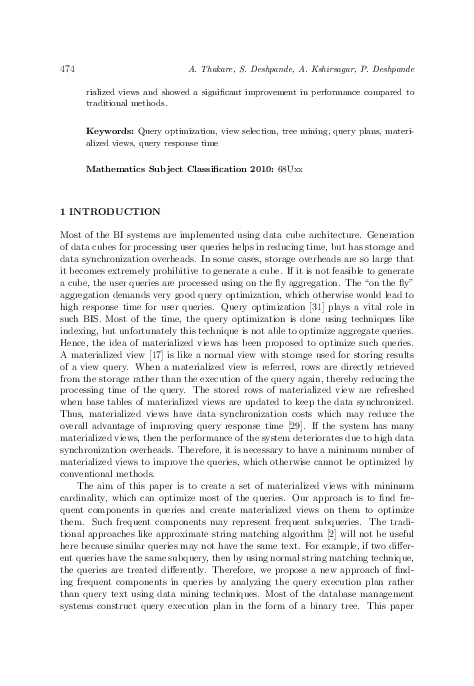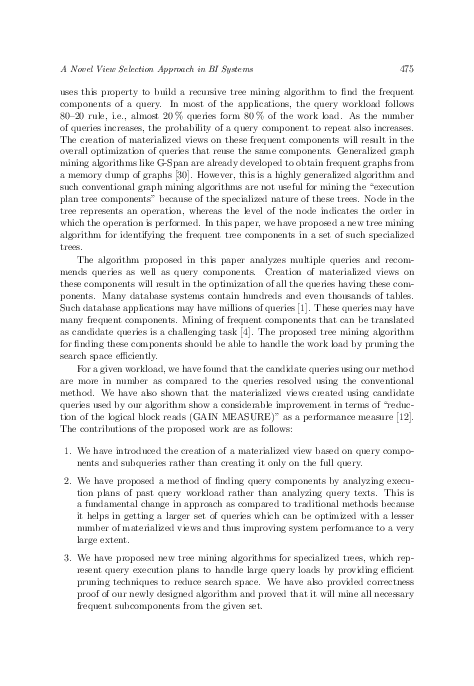Mining Query Plans for Finding Candidate Queries and Sub-Queries for Materialized Views in BI Systems Without Cube Generation
keywords: Query optimization, view selection, tree mining, query plans, materialized views, query response time
Materialized views are important for optimizing Business Intelligence (BI) systems when they are designed without data cubes. Selecting candidate queries from large number of queries for materialized views is a challenging task. Most of the work done in the past involves finding out frequent queries from the past workload and creating materialized views from such queries by either manually analyzing workload or using approximate string matching algorithms using query text. Most of the existing methods suggest complete queries but ignore query components such as sub queries for creation of materialized views. This paper presents a novel method to determine on which queries and query components materialized views can be created to optimize aggregate and join queries by mining database of query execution plans which are in the form of binary trees. The proposed algorithm showed significant improvement in terms of more number of optimized queries because it is using the execution plan tree of the query as a basis of selection of query to be optimized using materialized views rather than choosing query text which is used by traditional methods. For selecting a correct set of queries to be optimized using materialized views, the paper proposes efficient specialized frequent tree component mining algorithm with novel heuristics to prune search space. These frequent components are used to determine the possible set of candidate queries for creation of materialized views. Experimentation on standard, real and synthetic data sets, and also the theoretical basis, proved that the proposed method is able to optimize a large number of queries with less number of materialized views and showed a significant improvement in performance compared to traditional methods.
mathematics subject classification 2000: 68Uxx
reference: Vol. 38, 2019, No. 2, pp. 473–496


